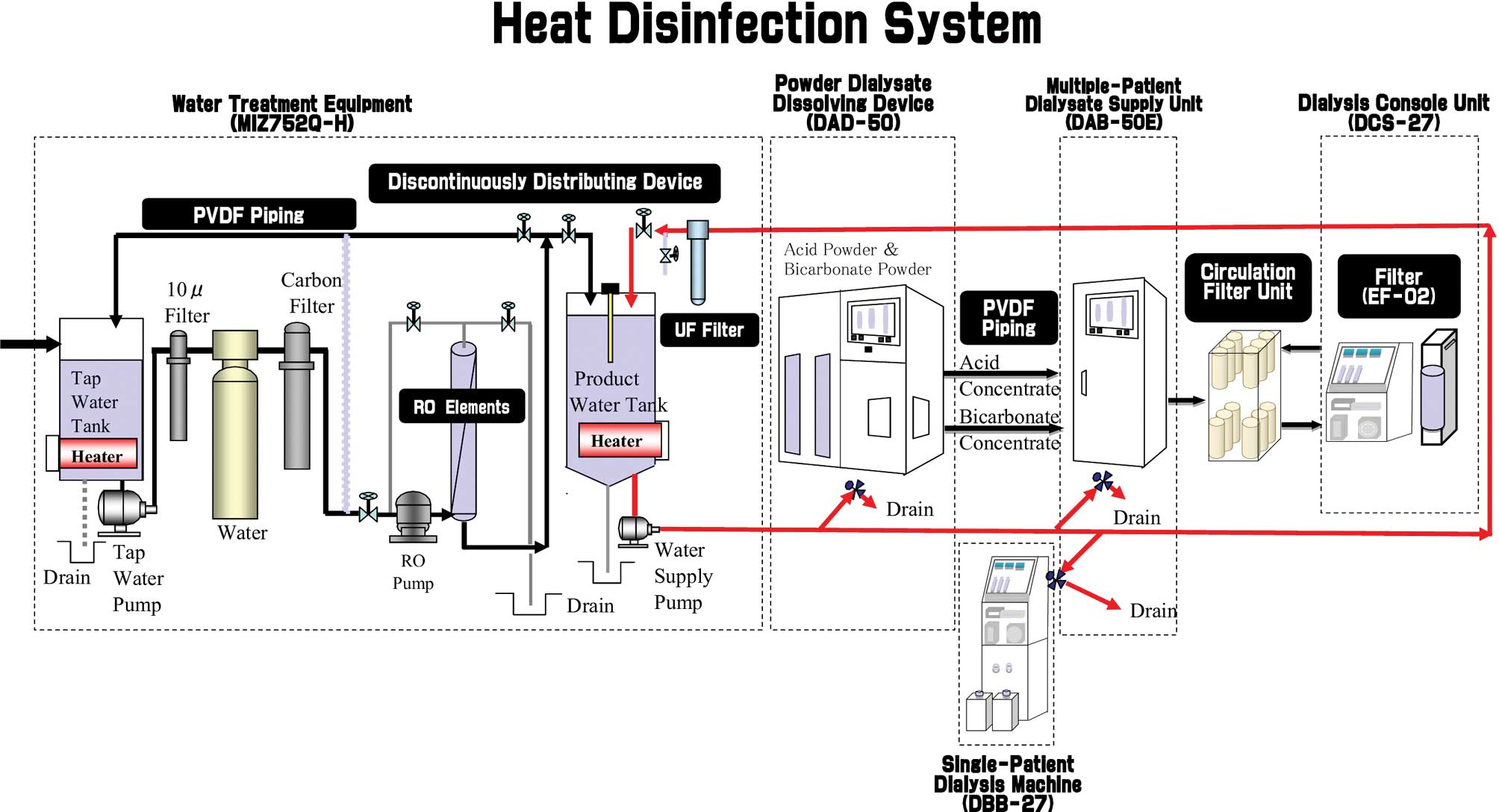|
1.
|
Van Wyck D, Eckardt KU, Uhlig K, Rocco M
and Levin A: Appraisal of evidence and control of bias in the
kidney disease outcomes quality initiative guideline development
process. Clin J Am Soc Nephrol. 2:8–10. 2007.PubMed/NCBI
|
|
2.
|
Fishbane S, Kalantar-Zadeh K and Nissenson
AR: Serum ferritin in chronic kidney disease: reconsidering the
upper limit for iron treatment. Semin Dial. 17:336–341. 2004.
View Article : Google Scholar : PubMed/NCBI
|
|
3.
|
Kalantar-Zadeh K, McAllister CJ, Lehn RS,
Lee GH, Nissenson AR and Kopple JD: Effect of
malnutrition-inflammation complex syndrome on EPO
hyporesponsiveness in maintenance hemodialysis patients. Am J
Kidney Dis. 42:761–773. 2003. View Article : Google Scholar : PubMed/NCBI
|
|
4.
|
Fishbane S and Maesaka JK: Iron management
in end-stage renal disease. Am J Kidney Dis. 29:319–333. 1997.
View Article : Google Scholar : PubMed/NCBI
|
|
5.
|
Wingard RL, Parker RA, Ismail N and Hakim
RM: Efficacy of oral iron therapy in patients receiving recombinant
human erythropoietin. Am J Kidney Dis. 25:433–439. 1995. View Article : Google Scholar : PubMed/NCBI
|
|
6.
|
Kapoian T, O'Mara NB, Singh AK, et al:
Ferric gluconate reduces epoetin requirements in hemodialysis
patients with elevated ferritin. J Am Soc Nephrol. 19:372–379.
2008. View Article : Google Scholar : PubMed/NCBI
|
|
7.
|
Macdougall IC: Intravenous administration
of iron in epoetin-treated haemodialysis patients – which drugs,
which regimen? Nephrol Dial Transplant. 15:1743–1745. 2000.
|
|
8.
|
Coyne DW, Kapoian T, Suki W, et al: Ferric
gluconate is highly efficacious in anemic hemodialysis patients
with high serum ferritin and low transferrin saturation: results of
the Dialysis Patients' Response to IV Iron with Elevated Ferritin
(DRIVE) Study. J Am Soc Nephrol. 18:975–984. 2007.PubMed/NCBI
|
|
9.
|
Rozen-Zvi B, Gafter-Gvili A, Paul M,
Leibovici L, Shpilberg O and Gafter U: Intravenous versus oral iron
supplementation for the treatment of anemia in CRF: systematic
review and meta-analysis. Am J Kidney Dis. 52:897–906. 2008.
View Article : Google Scholar : PubMed/NCBI
|
|
10.
|
Lenga I, Lok C, Marticorena R, Hunter J,
Dacouris N and Goldstein M: Role of oral iron in the management of
long-term hemodialysis patients. Clin J Am Soc Nephrol. 2:688–693.
2007. View Article : Google Scholar : PubMed/NCBI
|
|
11.
|
Stoves J, Inglis H and Newstead CG: A
randomized study of oral vs intravenous iron supplementation in
patients with progressive renal insufficiency treated with
erythropoietin. Nephrol Dial Transplant. 16:967–974. 2001.
View Article : Google Scholar : PubMed/NCBI
|
|
12.
|
Charytan C, Qunibi W and Bailie GR:
Comparison of intravenous iron sucrose to oral iron in the
treatment of anemic patients with chronic kidney disease not on
dialysis. Nephron Clin Pract. 100:55–62. 2005. View Article : Google Scholar : PubMed/NCBI
|
|
13.
|
Muñoz M, Villar I and García-Erce JA: An
update on iron physiology. World J Gastroenterol. 15:4617–4626.
2009.
|
|
14.
|
Pérez-García R, Martín-Malo A, Fort J, et
al: Baseline characteristics of an incident haemodialysis
population in Spain: results from ANSWER – a multicentre,
prospective, observational cohort study. Nephrol Dial Transplant.
24:578–588. 2009.PubMed/NCBI
|
|
15.
|
Malyszko J and Mysliwiec M: Hepcidin in
anemia and inflammation in chronic kidney disease. Kidney Blood
Press Res. 30:15–30. 2007. View Article : Google Scholar
|
|
16.
|
Nakai S, Masakane I, Shigematsu T, et al:
An overview of regular dialysis treatment in Japan (as of 31
December 2007). Ther Apher Dial. 13:457–504. 2009. View Article : Google Scholar : PubMed/NCBI
|
|
17.
|
Agarwal R, Rizkala AR, Bastani B, Kaskas
MO, Leehey DJ and Besarab A: A randomized controlled trial of oral
versus intravenous iron in chronic kidney disease. Am J Nephrol.
26:445–454. 2006. View Article : Google Scholar : PubMed/NCBI
|
|
18.
|
Boddy K, Lawson DH, Linton AL and Will G:
Iron metabolism in patients with chronic renal failure. Clin Sci.
39:115–121. 1970.PubMed/NCBI
|
|
19.
|
Hezode C, Cazeneuve C, Coue O, et al:
Liver iron accumulation in patients with chronic active hepatitis
C: prevalence and role of hemochromatosis gene mutations and
relationship with hepatic histological lesions. J Hepatol.
31:979–984. 1999. View Article : Google Scholar : PubMed/NCBI
|
|
20.
|
Lim PS, Wei YH, Yu YL and Kho B: Enhanced
oxidative stress in haemodialysis patients receiving intravenous
iron therapy. Nephrol Dial Transplant. 14:2680–2687. 1999.
View Article : Google Scholar : PubMed/NCBI
|
|
21.
|
Nascimento MM, Suliman ME, Bruchfeld A, et
al: The influence of hepatitis C and iron replacement therapy on
plasma pentosidine levels in haemodialysis patients. Nephrol Dial
Transplant. 19:3112–3116. 2004. View Article : Google Scholar : PubMed/NCBI
|
|
22.
|
Feldman HI, Santanna J, Guo W, et al: Iron
administration and clinical outcomes in hemodialysis patients. J Am
Soc Nephrol. 13:734–744. 2002.PubMed/NCBI
|
|
23.
|
Williams P and Griffiths E: Bacterial
transferrin receptors – structure, function and contribution to
virulence. Med Microbiol Immunol. 181:301–322. 1992.
|
|
24.
|
Patruta SI, Edlinger R, Sunder-Plassmann G
and Hörl WH: Neutrophil impairment associated with iron therapy in
hemodialysis patients with functional iron deficiency. J Am Soc
Nephrol. 9:655–663. 1998.PubMed/NCBI
|
|
25.
|
Lonnemann G, Krautzig S and Koch KM:
Quality of water and dialysate in haemodialysis. Nephrol Dial
Transplant. 11:946–949. 1996. View Article : Google Scholar : PubMed/NCBI
|










